With greater screen usage in today’s world, an unhealthy lifestyle, and lesser care for the eyes, defects around these are increasing. Eye doctors are found in every major or minor hospital. The eye doctors or eye specialists, however, can be divided into two types, i.e., Ophthalmologists and Optometrists.
Let us dig into the meaning of each to better understand the difference. An ophthalmologist is a medical doctor or doctor of osteopathy with specialized training in diagnosing and treating problems related to eyes and vision. An ophthalmologist is different from an optometrist because the latter has not received a professional medical degree and can only examine eye vision-related abnormalities.
An optometrist can provide a brief treatment of a few eye conditions but is not able to prescribe a medicine or carry out the surgery.
In addition, opticians are known for their experience in eye vision and glasses too. They can suggest glasses, and lenses based on an ophthalmologist’s prescription. However, they CAN NOT carry out eye examinations, prescriptions, diagnoses, or treatments.
Unlike optometrists or opticians, an ophthalmologist has been exclusively trained to provide holistic eye care to their patients, including detailed eye checkups, and surgical or medicinal treatments for eye diseases, and other conditions caused.
If you are an Ophthalmologist, Eye Surgeon, Eye Specialist, or a person related to Ophthalmology, then this page is for you. You can download beautifully designed Prescription Pad Design Templates, formatted in Microsoft Word here, and create a wonderful Prescription Pad for yourself. All of these templates are fully customizable and printable.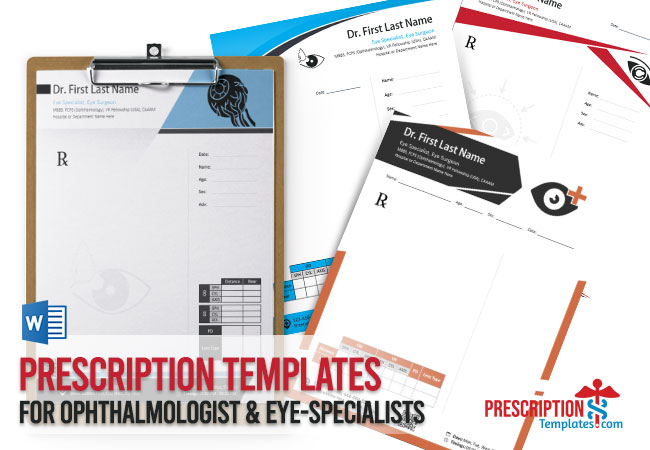
#1

#2

#3

#4
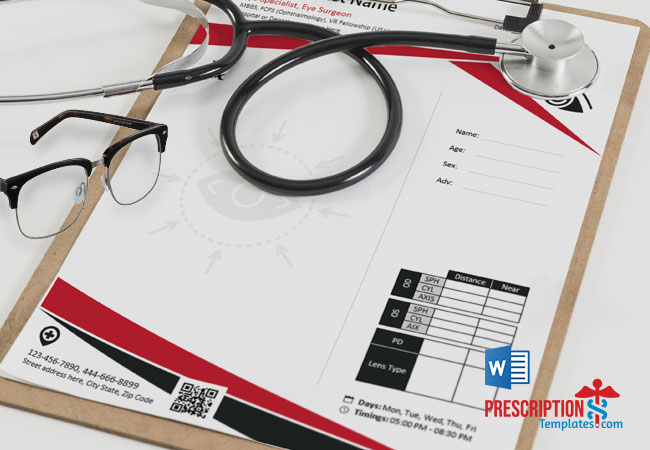
#5
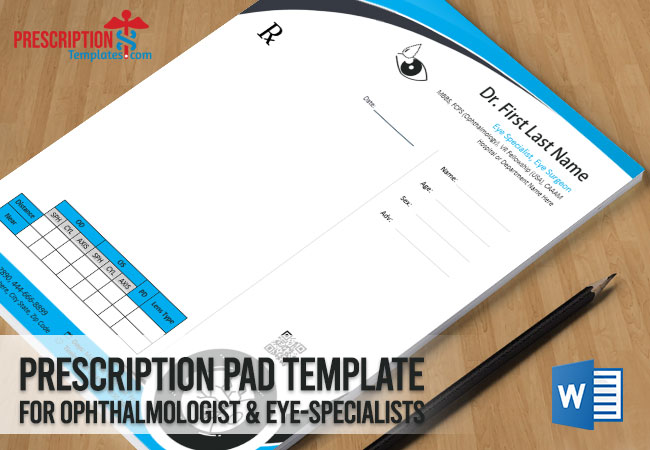
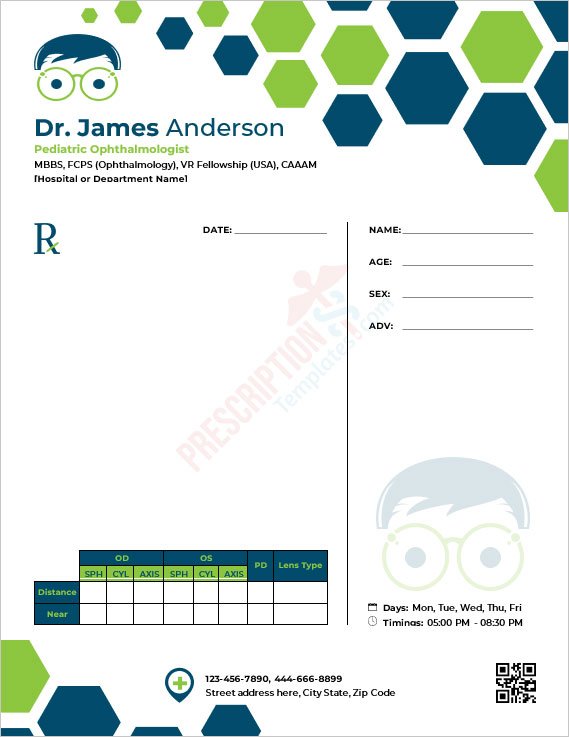
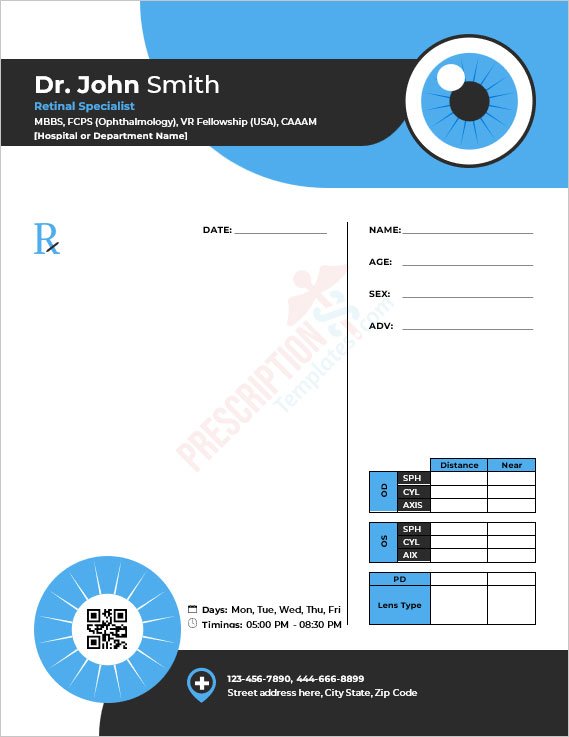
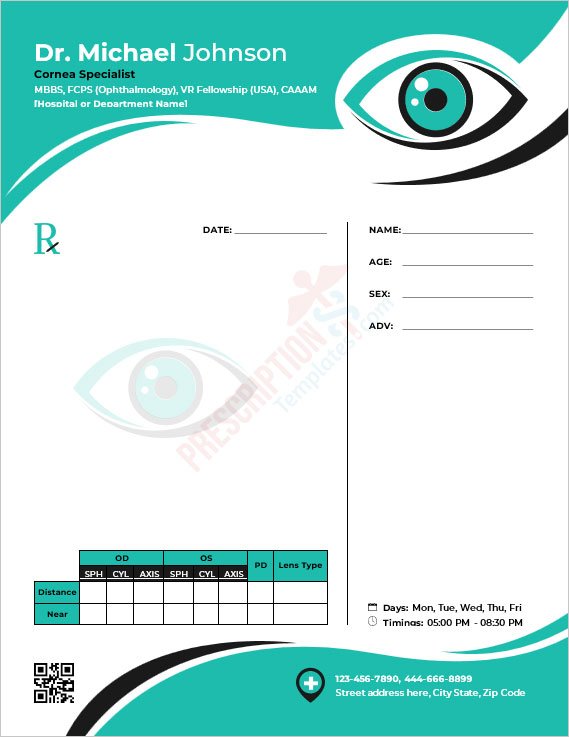
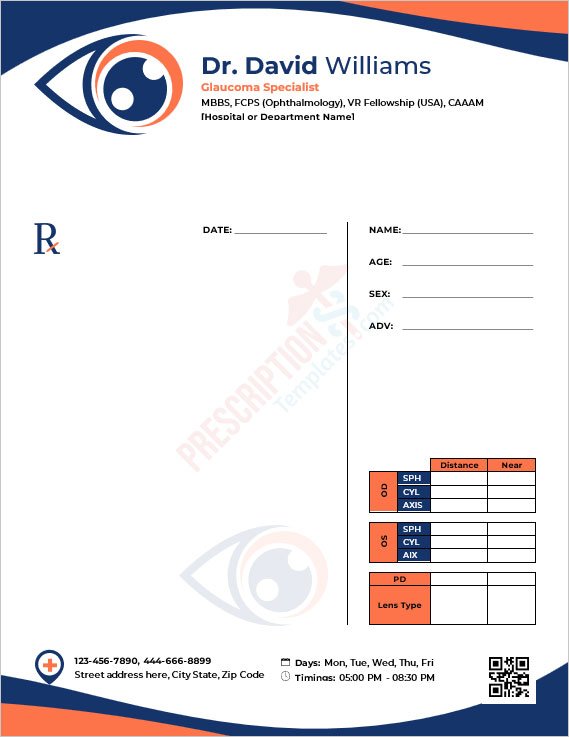
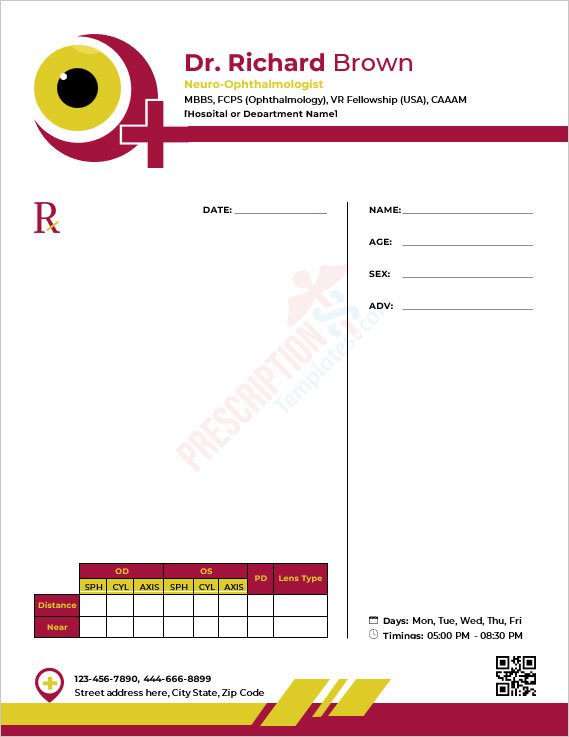
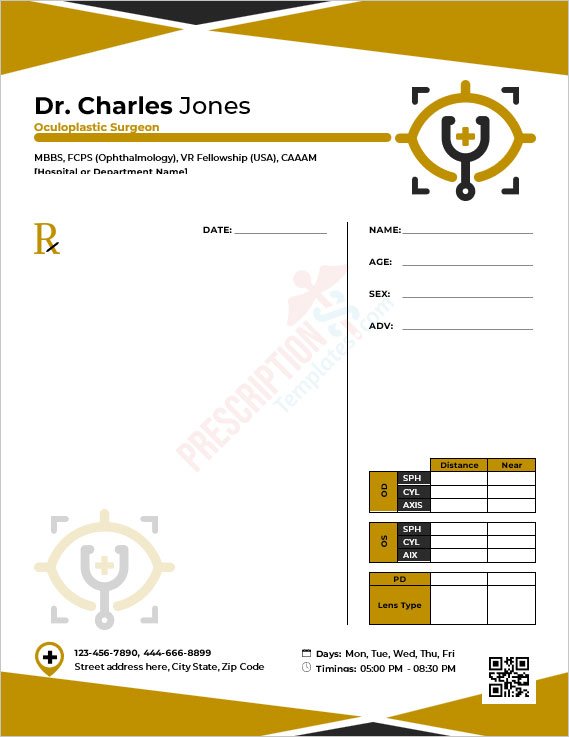
Check out the video below to discover the art of creating a Prescription Pad in MS Word.
The prescription for an ophthalmologist differs significantly from that of a general doctor due to the nature of the conditions that ophthalmologists treat. As an ophthalmologist, my prescriptions require a higher degree of specificity and detail, as I treat a variety of ocular disorders such as glaucoma, macular degeneration, and diabetic retinopathy.
One of the primary differences in the prescription pad for ophthalmologists is the inclusion of specifics such as the concentration, volume, and strength of the medication. For instance, when prescribing eye drops, the concentration of the active ingredient must be clearly stated. Furthermore, the specific eye affected must be indicated on the prescription.
Another difference is the use of specific medical terminology such as the indication, diagnosis, and instructions for use. Ophthalmologists must be precise in their prescriptions to ensure that patients receive the right medication and instructions to use it correctly.
The differences between a prescription pad for a general doctor and an ophthalmologist are significant, and they do matter. Ophthalmologists require a higher degree of specificity in their prescriptions to ensure that their patients receive the correct treatment for their ocular disorders. By using specific medical terminology and details, ophthalmologists can provide a higher level of care for their patients.
The use of a prescription pad by an optometrist is a topic of considerable debate in the field of ophthalmology. While optometrists are trained to diagnose and treat certain eye conditions, they do not have the same level of training and expertise as ophthalmologists, who are medical doctors with a specialization in eye care.
The prescription pad used by an ophthalmologist is specifically designed to meet the unique needs of patients with eye conditions that require medical treatment. Ophthalmologists are trained to diagnose and treat a wide range of ocular disorders, including glaucoma, cataracts, and retinal diseases, and their prescription pads reflect this expertise.
Optometrists, on the other hand, are trained to provide primary eye care services, such as vision testing and prescribing corrective lenses. While some optometrists may have the ability to diagnose and treat certain eye conditions, they do not have the same level of training and expertise as ophthalmologists, and their prescription pads may not meet the needs of patients with more complex eye conditions.
While optometrists and ophthalmologists both play important roles in the care of patients with eye conditions, their prescription pads are not interchangeable. The prescription pad used by an ophthalmologist is specifically designed to meet the unique needs of patients with complex ocular disorders, and should only be used by those with the specialized training and expertise required to do so.
The “holistic” eye care provision of ophthalmologists covers a range of services, that are:
The treatments provided by ophthalmologists are of several kinds such as that provided orally through medicines, tropically through the eyes, conventional eye surgery or cryotherapy also known as freeze treatment, laser treatment, or chemotherapy (through the usage of intense chemicals).
An ophthalmologist table is a vital tool used to write optometric readings for patients. It is an essential element of the ophthalmology examination process, and it is a key component of the patient’s record. Here is a breakdown of the various components of the ophthalmologist table:
An ophthalmologist table is an essential tool for the ophthalmology examination process, and it plays a vital role in the accurate measurement and recording of optometric readings. With the various components of the table, ophthalmologists can perform a comprehensive examination of the eye, allowing them to diagnose and treat a wide range of ocular disorders.
An ophthalmologist, while making a prescription pad for optometric readings, may suggest the following parameters in a tabular form to ensure the patient’s accurate eye measurements and proper vision correction:
It is important to note that these parameters may vary depending on the individual patient’s eye condition and vision needs. As such, a comprehensive eye examination is necessary to accurately determine the appropriate optometric readings.
For primary care, you might want to go to an optometrist first who would refer you to an ophthalmologist if needed. However, if you believe you have a complicated condition going straight to the ophthalmologist for intensive care will be better.